The SF12 Well in LoRaWAN: Problem and End-Device-Based Solutions
Abstract
1. Introduction
2. LoRaWAN Main Features
2.1. LoRaWAN Overview
2.2. LoRaWAN Physical Layer
2.3. LoRaWAN MAC Layer
3. Related Work
4. The Problem
4.1. Simulator Details
4.2. Simulated Scenarios
4.3. Illustrating the SF12 Well Phenomenon
4.4. Global Results
5. End-Device-Based Solutions
5.1. Proposed Solutions
- SFM1: SF7, which corresponds to the greatest DR value, is always used. No SF change is conducted even if the data or the ACK frames are lost.
- SFM2: this technique adds an extra step to SFM0. When the SF reaches the SF12 value, if the corresponding ACK is not received after two transmission opportunities, the SF is reset to SF7. The rationale for this approach is that after unsuccessful transmission using SF12 it may be better to switch to SF7 as congestion might be the reason for the frame losses. Hence, SFM2 leads to a cyclic use of all the SF values.
- SFM3: the basis for this technique is also SFM0. However, with this technique if an ACK is received, the ED will decrease its SF value. Hence, this option brings the opportunity to increase the DR, with an expectation to reduce the frame ToA and thus reduce network congestion.
5.2. Evaluation
6. Conclusions
Author Contributions
Funding
Institutional Review Board Statement
Informed Consent Statement
Data Availability Statement
Conflicts of Interest
References
- Raza, U.; Kulkarni, P.; Sooriyabandara, M. Low Power Wide Area Networks: An Overview. IEEE Commun. Surv. Tutor. 2017, 19, 855–873. [Google Scholar] [CrossRef]
- Chaudhari, B.S.; Zennaro, M.; Borkar, S. LPWAN technologies: Emerging application characteristics, requirements, and design considerations. Future Internet 2020, 12, 46. [Google Scholar] [CrossRef]
- Minaburo, A.; Toutain, L.; Gomez, C.; Barthel, D.; Zuniga, J.C. SCHC: Generic Framework for Static Context Header Compression and Fragmentation; RFC 8724; Internet Engineering Task Force: Fremont, CA, USA, 2020. [Google Scholar]
- Gomez, C.; Minaburo, A.; Toutain, L.; Barthel, D.; Zuniga, J.C. IPv6 over LPWANs: Connecting low power wide area networks to the Internet (of Things). IEEE Wirel. Commun. 2020, 27, 206–213. [Google Scholar] [CrossRef]
- Haxhibeqiri, J.; De Poorter, E.; Moerman, I.; Hoebeke, J. A survey of LoRaWAN for IoT: From technology to application. Sensors 2018, 18, 3995. [Google Scholar] [CrossRef] [PubMed]
- Augustin, A.; Yi, J.; Clausen, T. A study of LoRa: Long range & low power networks for the Internet of Things. Sensors 2016, 16, 1466. [Google Scholar] [CrossRef]
- Pop, A.-I.; Raza, U.; Kulkarni, P.; Sooriyabandara, M. Does Bidirectional Traffic Do More Harm Than Good in LoRaWAN Based LPWA Networks? In Proceedings of the GLOBECOM 2017—2017 IEEE Global Communications Conference, Singapore, 4–8 December 2017. [Google Scholar] [CrossRef]
- Capuzzo, M.; Magrin, D.; Zanella, A. Confirmed Traffic in LoRaWAN: Pitfalls and Countermeasures. In Proceedings of the 2018 17th Annual Mediterranean Ad Hoc Networking Workshop (Med-Hoc-Net), Capri, Italy, 20–22 June 2018; pp. 1–7. [Google Scholar] [CrossRef]
- Magrin, D.; Capuzzo, M.; Zanella, A. A Thorough Study of LoRaWAN Performance Under Different Parameter Settings. IEEE Internet Things J. 2020, 7, 116–127. [Google Scholar] [CrossRef]
- Lavric, A.; Popa, V. Performance Evaluation of LoRaWAN Communication Scalability in Large-Scale Wireless Sensor Networks. Wirel. Commun. Mob. Comput. 2018, 2018, 9472075. [Google Scholar] [CrossRef]
- Böcker, S.; Arendt, C.; Jörke, P.; Wietfeld, C. LPWAN in the Context of 5G: Capability of LoRaWAN to Contribute to MMTC. In Proceedings of the 2019 IEEE 5th World Forum on Internet of Things (WF-IoT), Limerick, Ireland, 15–18 April 2019; pp. 737–742. [Google Scholar] [CrossRef]
- FLoRa. Framework for LoRa. Available online: https://flora.aalto.fi (accessed on 21 July 2021).
- AFLoRa. Advanced Framework for LoRaWAN. Available online: https://github.com/lluiscas/AFloRa (accessed on 27 July 2021).
- Casals, L.; Mir, B.; Vidal, R.; Gomez, C. Modeling the Energy Performance of LoRaWAN. Sensors 2017, 17, 2364. [Google Scholar] [CrossRef] [PubMed]
- LoRa Alliance Technical Committee. LoRaWAN® L2 1.0.4 Specification (TS001-1.0.4); LoRa Alliance: Fremont, CA, USA, 2020. [Google Scholar]
- Semtech Corporation. SX1272/3/6/7/8: LoRa Modem. Designer’s Guide. AN1200.13; Semtech Corporation: Camarillo, CA, USA, 2013. [Google Scholar]
- LoRa Alliance Technical Committee. LoRaWAN™ 1.0.2 Regional Parameters; LoRa Alliance Technical Committee: Fremont, CA, USA, 2020. [Google Scholar]
- ETSI EN 300.220-2 v3.2.1 (2018-06). Short Range Devices (SRD) Operating in the Frequency Range 25 MHz to 1000 MHz; Part 2: Harmonised Standard for Access to Radio Spectrum for Non Specific Radio Equipment. Available online: https://www.etsi.org/deliver/etsi_en/300200_300299/30022002/03.02.01_60/en_30022002v030201p.pdf (accessed on 21 July 2021).
- LoRa Alliance Technical Committee. LoRaWAN Specification; Version V1.0.3; LoRa Alliance: Beaverton, OR, USA, 2018. [Google Scholar]
- LoRa Alliance Certification. Available online: https://lora-alliance.org/lorawan-certification (accessed on 25 July 2021).
- Capuzzo, M.; Magrin, D.; Zanella, A. Mathematical Modeling of LoRa WAN Performance with Bi-Directional Traffic. In Proceedings of the 2018 IEEE Global Communications Conference (GLOBECOM), Abu Dhabi, UAE, 9–13 December 2018; pp. 206–212. [Google Scholar] [CrossRef]
- Mikhaylov, K.; Petäjäjärvi, J.; Pouttu, A. Effect of Downlink Traffic on Performance of LoRaWAN LPWA Networks: Empirical Study. In Proceedings of the 2018 IEEE 29th Annual International Symposium on Personal, Indoor and Mobile Radio Communications (PIMRC), Bologna, Italy, 9–12 September 2018; pp. 1–6. [Google Scholar] [CrossRef]
- Di Vincenzo, V.; Heusse, M.; Tourancheau, B. Improving Downlink Scalability in LoRaWAN. In Proceedings of the ICC 2019-2019 IEEE International Conference on Communications (ICC), Shanghai, China, 20–24 May 2019; pp. 1–7. [Google Scholar] [CrossRef][Green Version]
- Sanchez-Iborra, R.; Sanchez-Gomez, J.; Ballesta-Viñas, J.; Cano, M.-D.; Skarmeta, A.F. Performance Evaluation of LoRa Considering Scenario Conditions. Sensors 2018, 18, 772. [Google Scholar] [CrossRef] [PubMed]
- Hasegawa, Y.; Suzuki, K. A Multi-User ACK-Aggregation Method for Large-Scale Reliable LoRaWAN Service. In Proceedings of the ICC 2019-2019 IEEE International Conference on Communications (ICC), Shanghai, China, 20–24 May 2019; pp. 1–7. [Google Scholar] [CrossRef]
- Kim, B.; Hwang, K.-i. Cooperative Downlink Listening for Low-Power Long-Range Wide-Area Network. Sustainability 2017, 9, 627. [Google Scholar] [CrossRef]
- LoRa Alliance Technical Committee. LoRaWAN Specification; Version V1.1; LoRa Alliance: Beaverton, OR, USA, 2017. [Google Scholar]
- Kufakunesu, R.; Hancke, G.P.; Abu-Mahfouz, A.M. A Survey on Adaptive Data Rate Optimization in LoRaWAN: Recent Solutions and Major Challenges. Sensors 2020, 20, 5044. [Google Scholar] [CrossRef] [PubMed]
- Garlisi, D.; Tinnirello, I.; Bianchi, G.; Cuomo, F. Capture Aware Sequential Waterfilling for LoRaWAN Adaptive Data Rate. IEEE Trans. Wirel. Commun. 2021, 20, 2019–2033. [Google Scholar] [CrossRef]
- Reynders, B.; Meert, W.; Pollin, S. Power and Spreading Factor Control in Low Power Wide Area Networks. In Proceedings of the 2017 IEEE International Conference on Communications (ICC), Paris, France, 21–25 May 2017; pp. 1–6. [Google Scholar]
- Sallum, E.; Pereira, N.; Alves, M.; Santos, M. Improving Quality-Of-Service in LoRa Low-Power Wide-Area Networks through Optimized Radio Resource Management. J. Sens. Actuator Netw. 2020, 9, 10. [Google Scholar] [CrossRef]
- Bankov, D.; Khorov, E.; Lyakhov, A. LoRaWAN Modeling and MCS Allocation to Satisfy Heterogeneous QoS Requirements. Sensors 2019, 19, 4204. [Google Scholar] [CrossRef] [PubMed]
- Slabicki, M.; Premsankar, G.; Di Francesco, M. Adaptive Configuration of Lora Networks for Dense IoT Deployments. In Proceedings of the NOMS 2018-2018 IEEE/IFIP Network Operations and Management Symposium, Taipei, Taiwan, 23–27 April 2018; pp. 1–9. [Google Scholar] [CrossRef]
- Kim, D.-Y.; Kim, S.; Hassan, H.; Park, J.H. Adaptive Data Rate Control in Low Power Wide Area Networks for Long Range IoT Services. J. Comput. Sci. 2017, 22, 171–178. [Google Scholar] [CrossRef]
- Cattani, M.; Boano, C.A.; Römer, K. An Experimental Evaluation of the Reliability of LoRa Long-Range Low-Power Wireless Communication. J. Sens. Actuator Netw. 2017, 6, 7. [Google Scholar] [CrossRef]
- Mikhaylov, K.; Stusek, M.; Masek, P.; Fujdiak, R.; Mozny, R.; Andreev, S.; Hosek, J. On the Performance of Multi-Gateway LoRaWAN Deployments: An Experimental Study. In Proceedings of the 2020 IEEE Wireless Communications and Networking Conference (WCNC), Seoul, Korea, 25–28 May 2020; pp. 1–6. [Google Scholar]
- Li, L.; Ren, J.; Zhu, Q. On the Application of LoRa LPWAN Technology in Sailing Monitoring System. In Proceedings of the 2017 13th Annual Conference on Wireless On-demand Network Systems and Services (WONS), Jackson Hole, WY, USA, 21–24 February 2017; pp. 77–80. [Google Scholar]
- Di Renzone, G.; Parrino, S.; Peruzzi, G.; Pozzebon, A.; Bertoni, D. LoRaWAN Underground to Aboveground Data Transmission Performances for Different Soil Compositions. IEEE Trans. Instrum. Meas. 2021, 70, 1–13. [Google Scholar] [CrossRef]
- Alves, H.B.M.; Lima, V.S.S.; Silva, D.R.C.; Nogueira, M.B.; Rodrigues, M.C.; Cunha, R.N.; Carvalho, D.F.; Sisinni, E.; Ferrari, P. Introducing a Survey Methodology for Assessing LoRaWAN Coverage in Smart Campus Scenarios. In Proceedings of the 2020 IEEE International Workshop on Metrology for Industry 4.0 IoT, Roma, Italy, 3–5 June 2020; pp. 708–712. [Google Scholar]
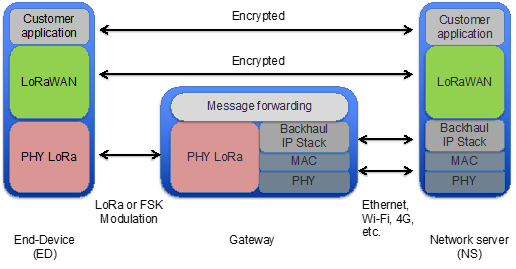

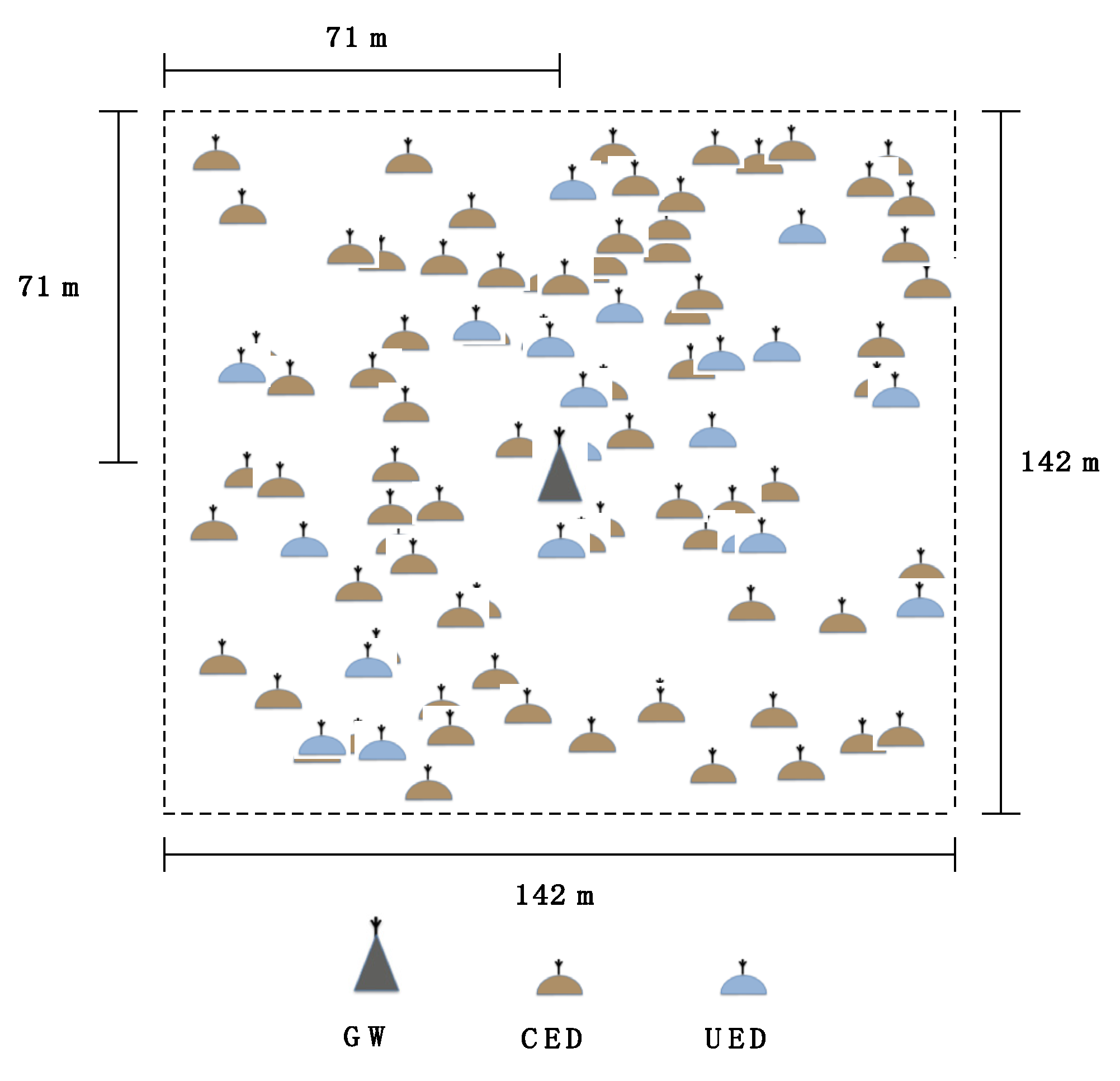


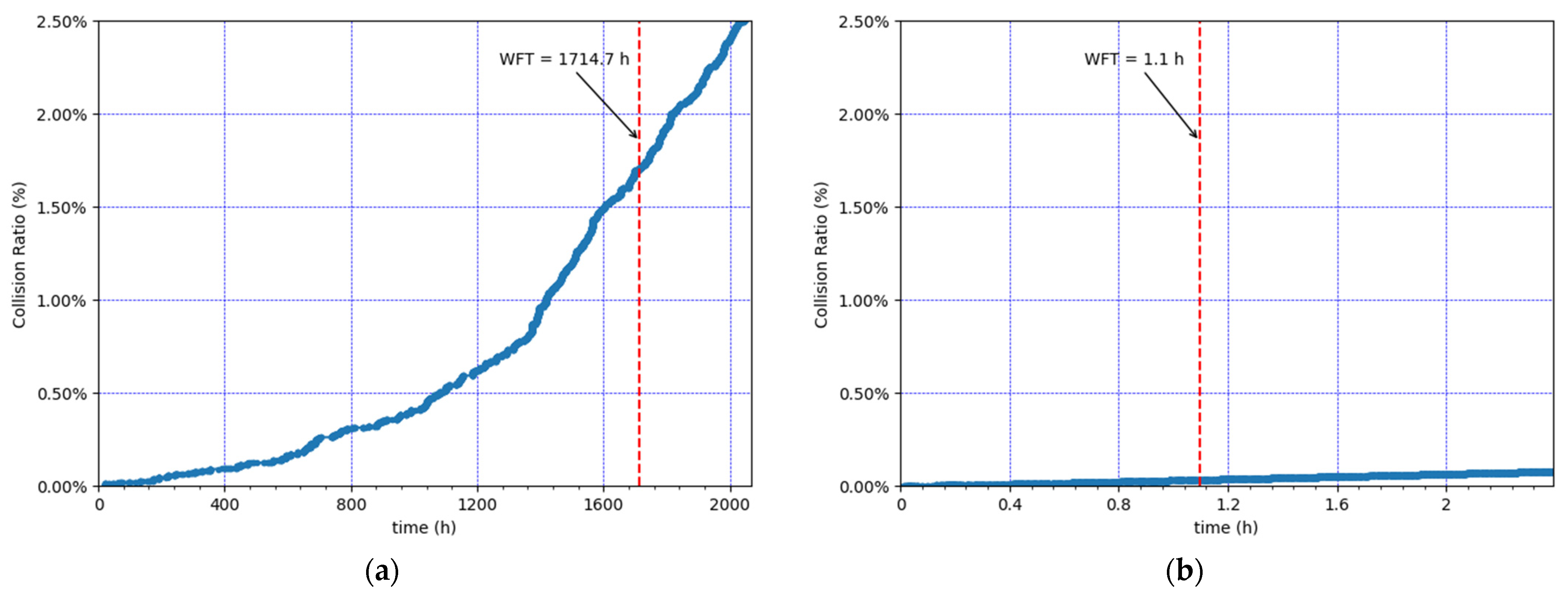

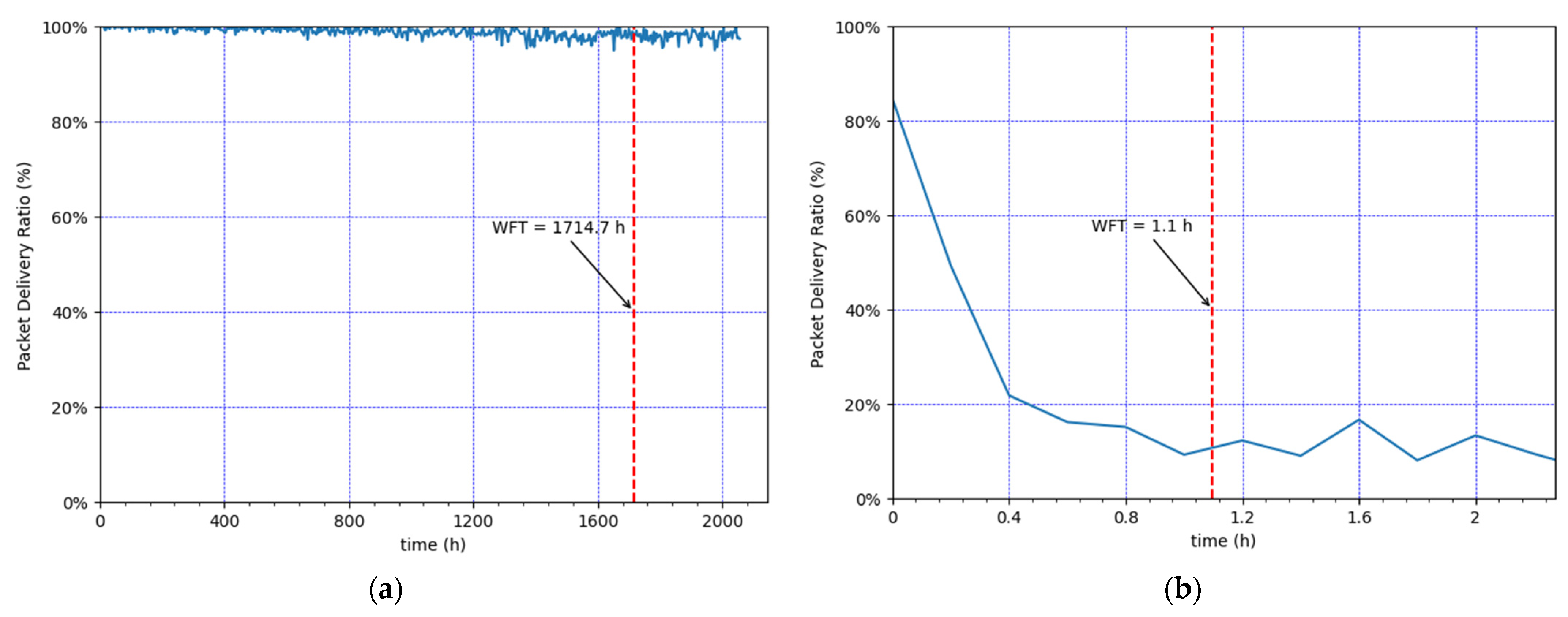
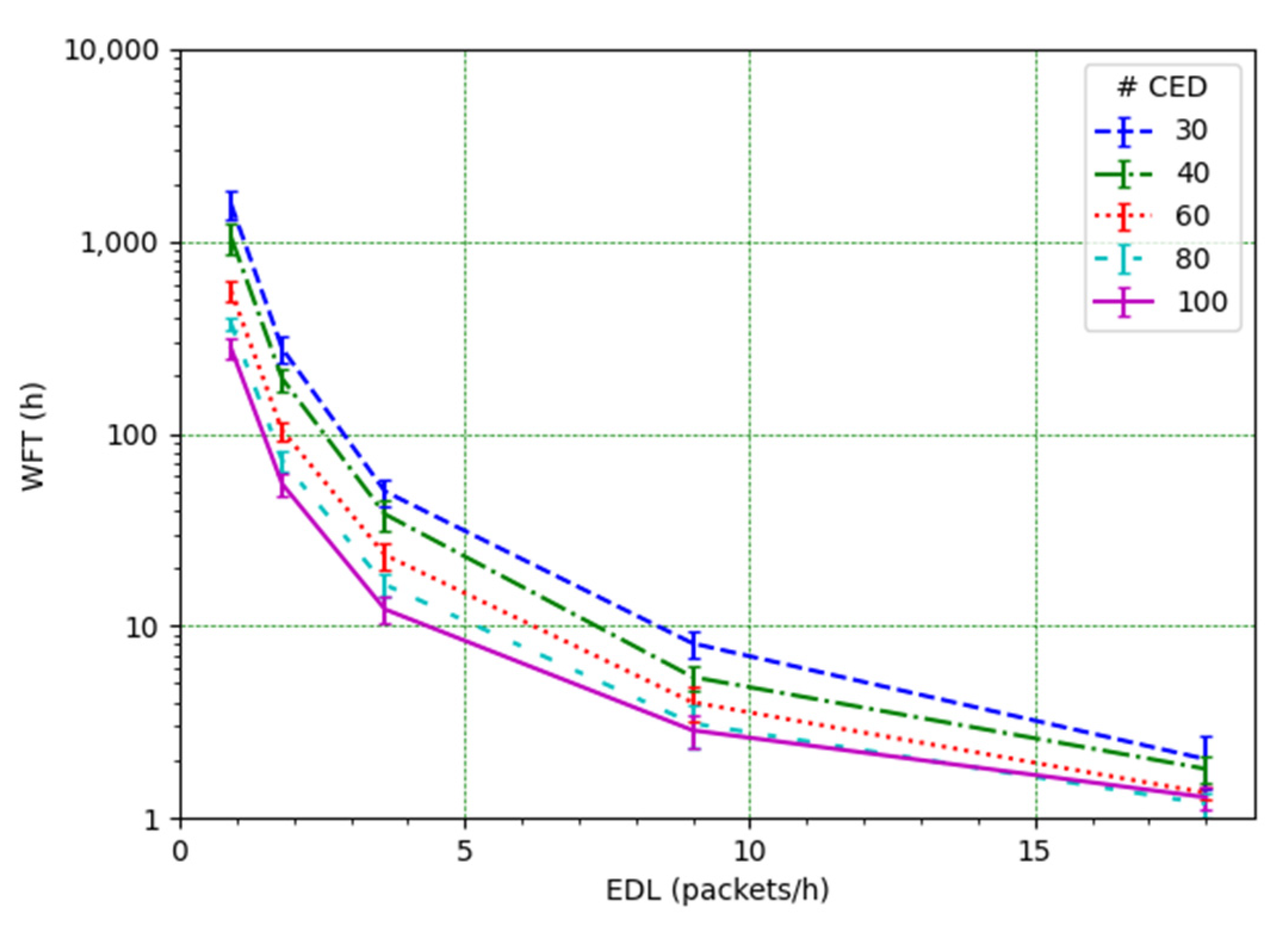
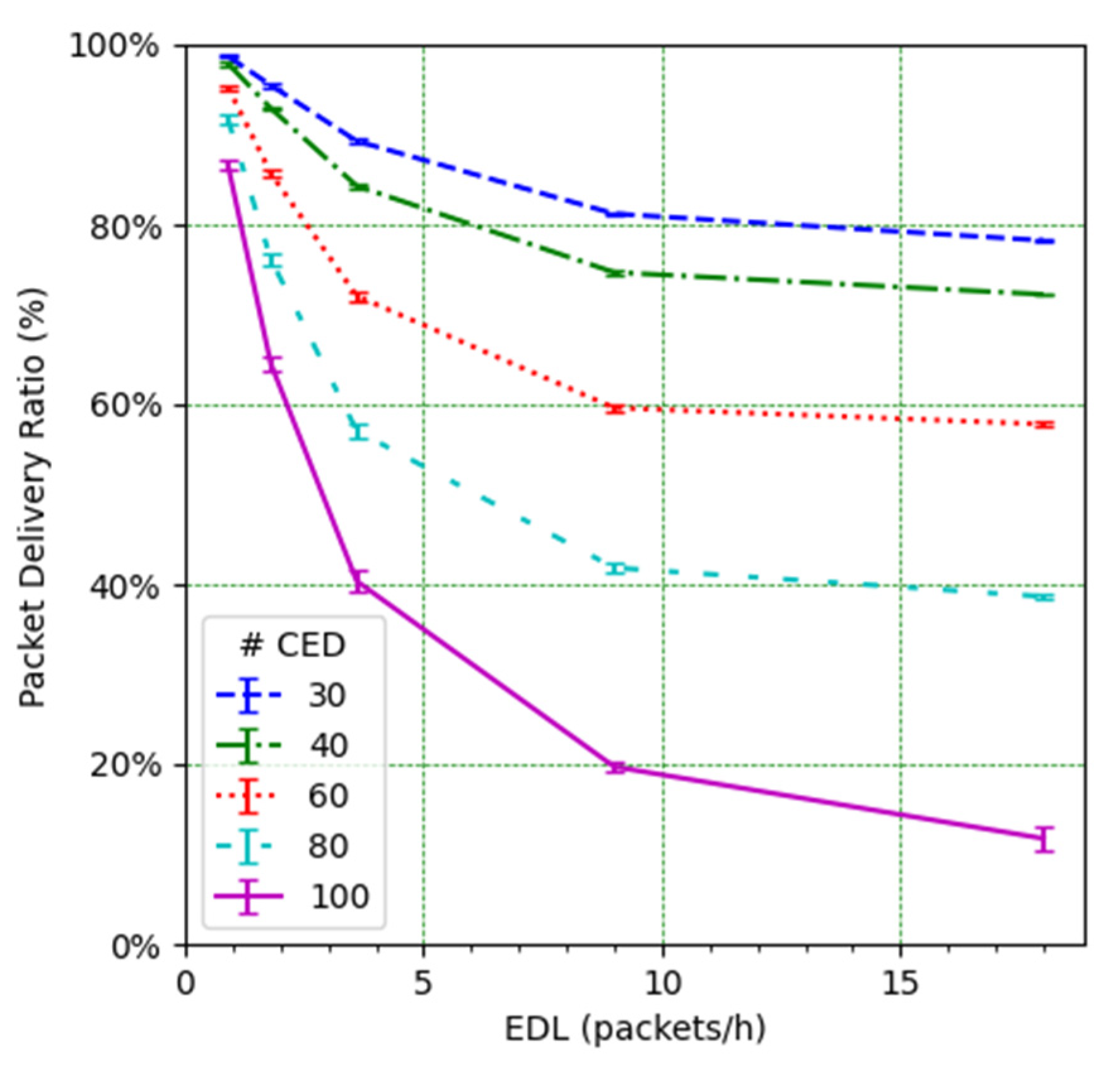
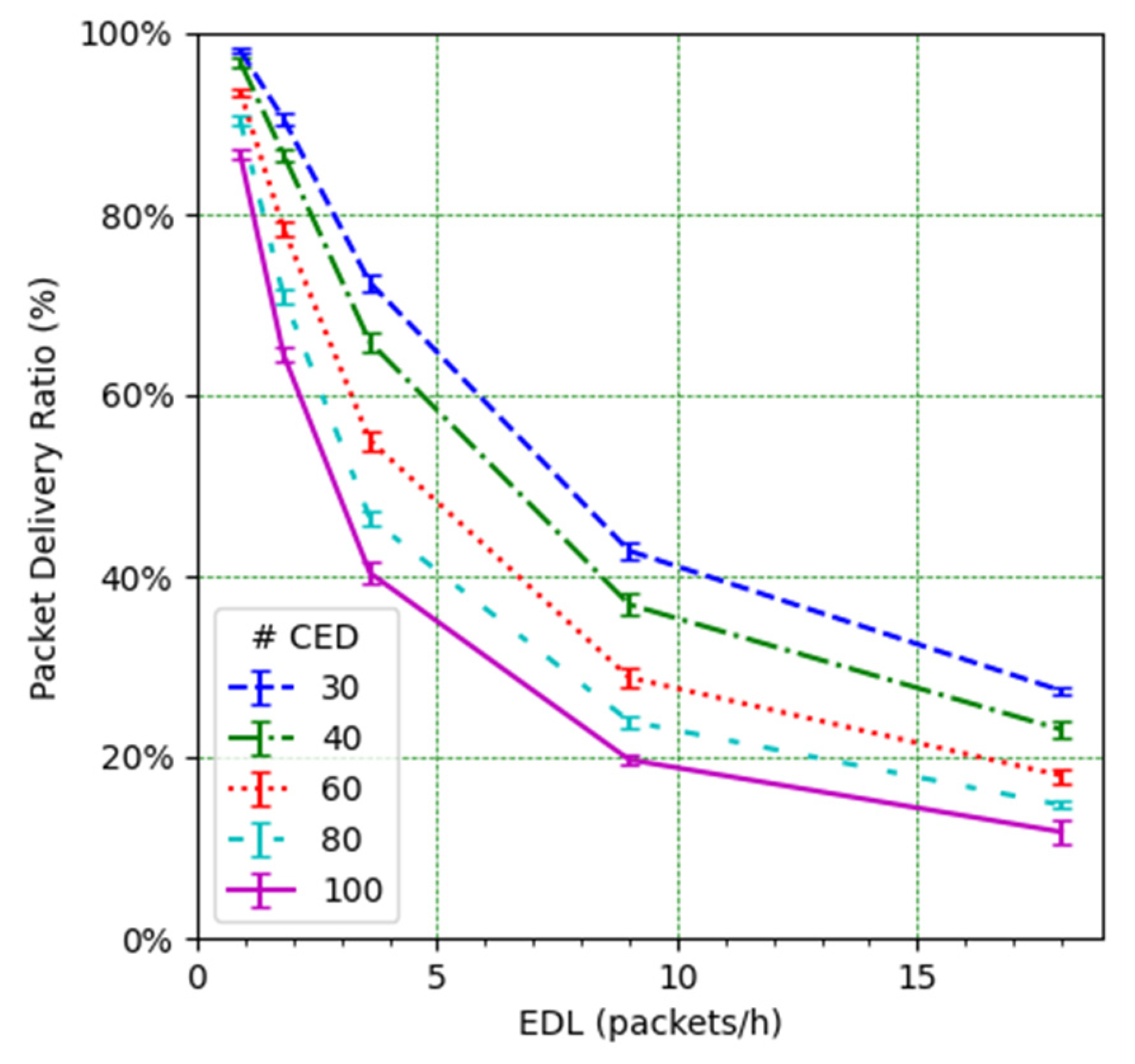
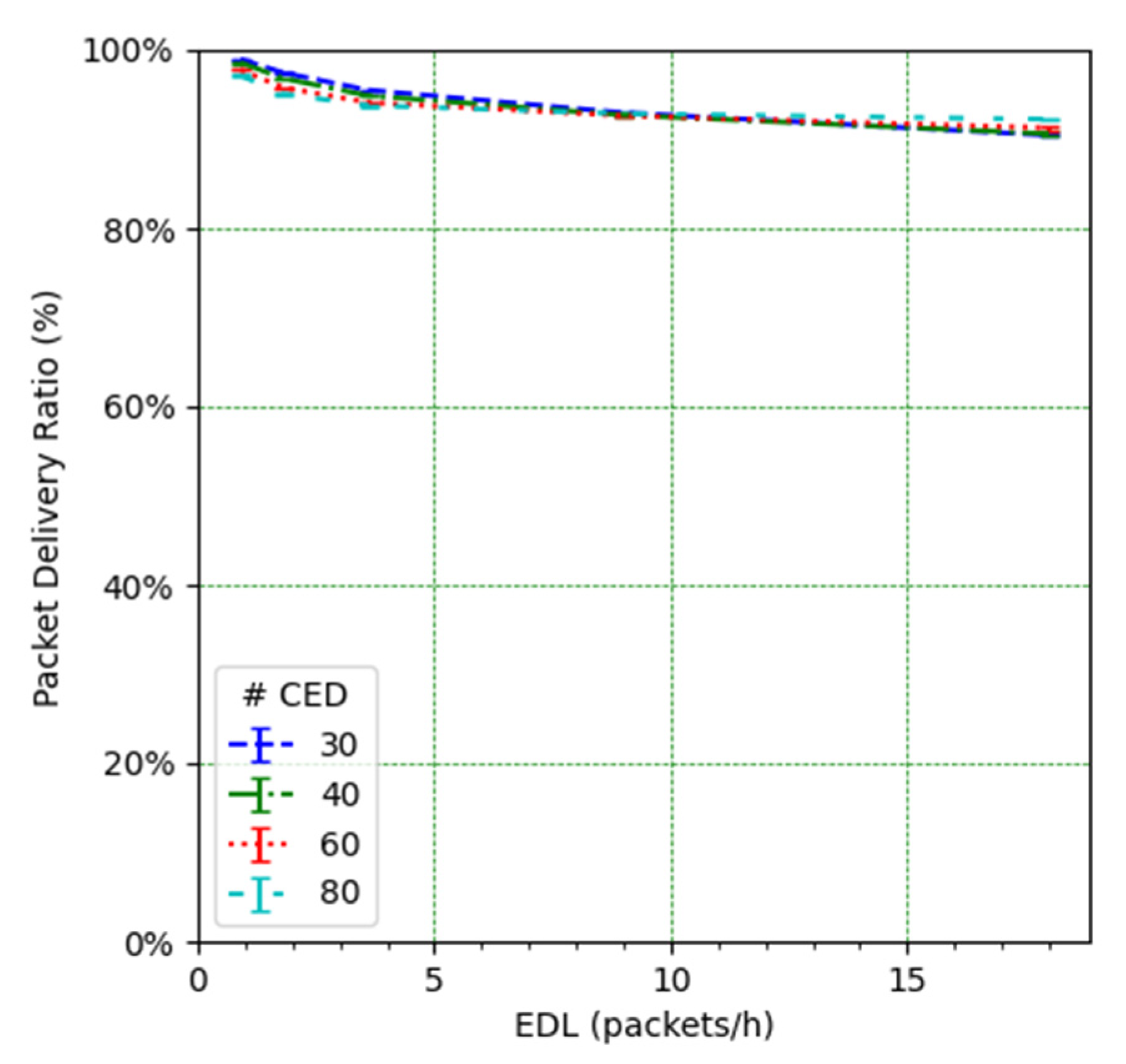
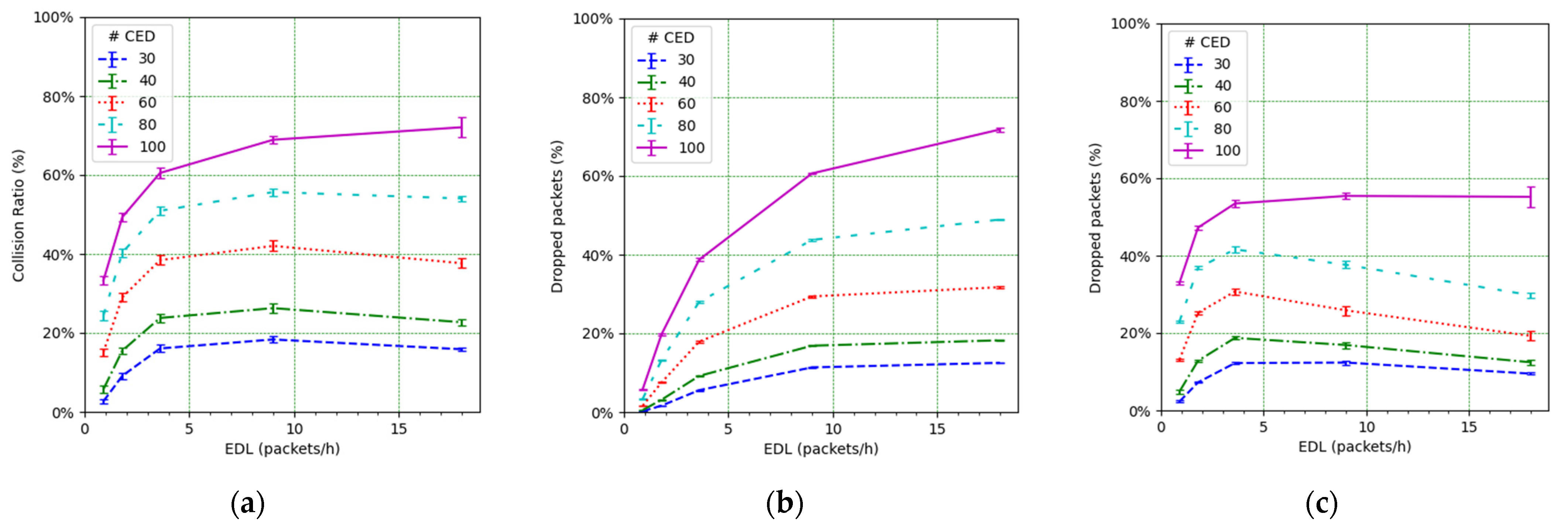

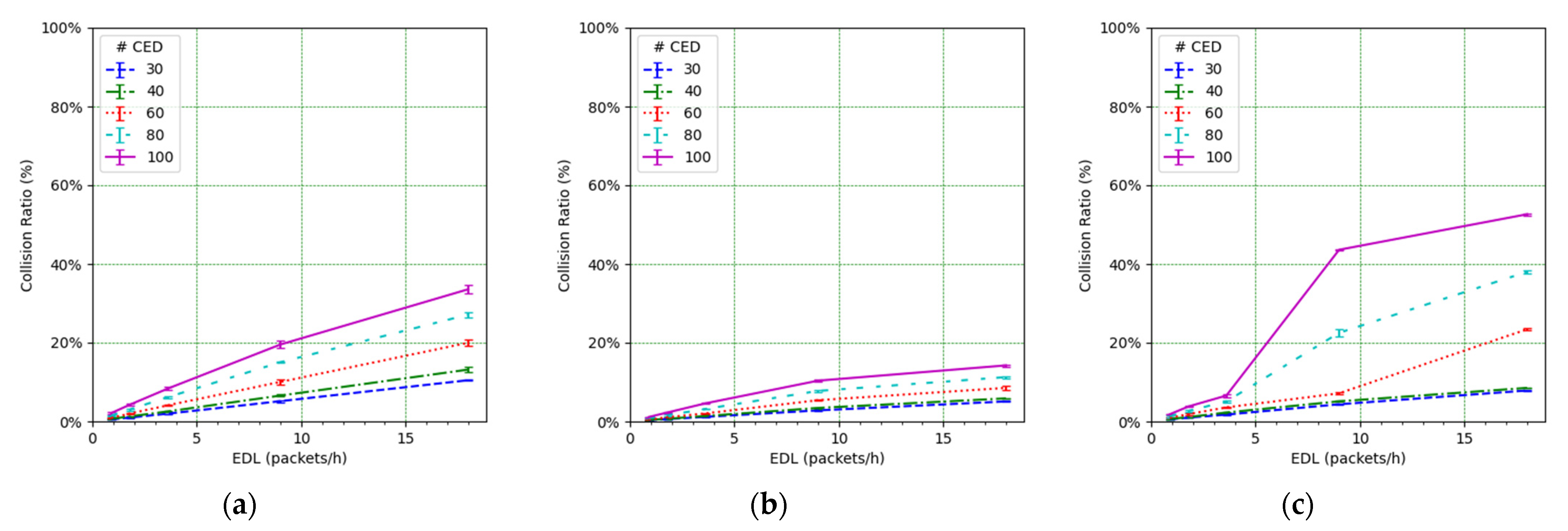
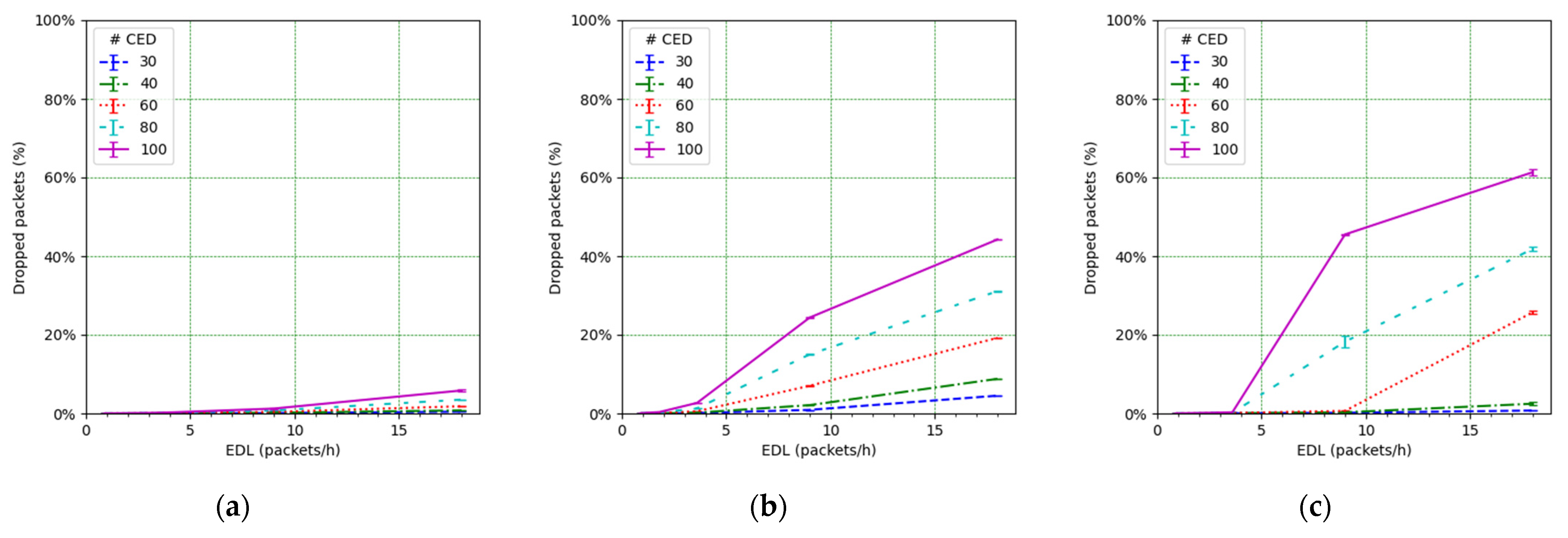

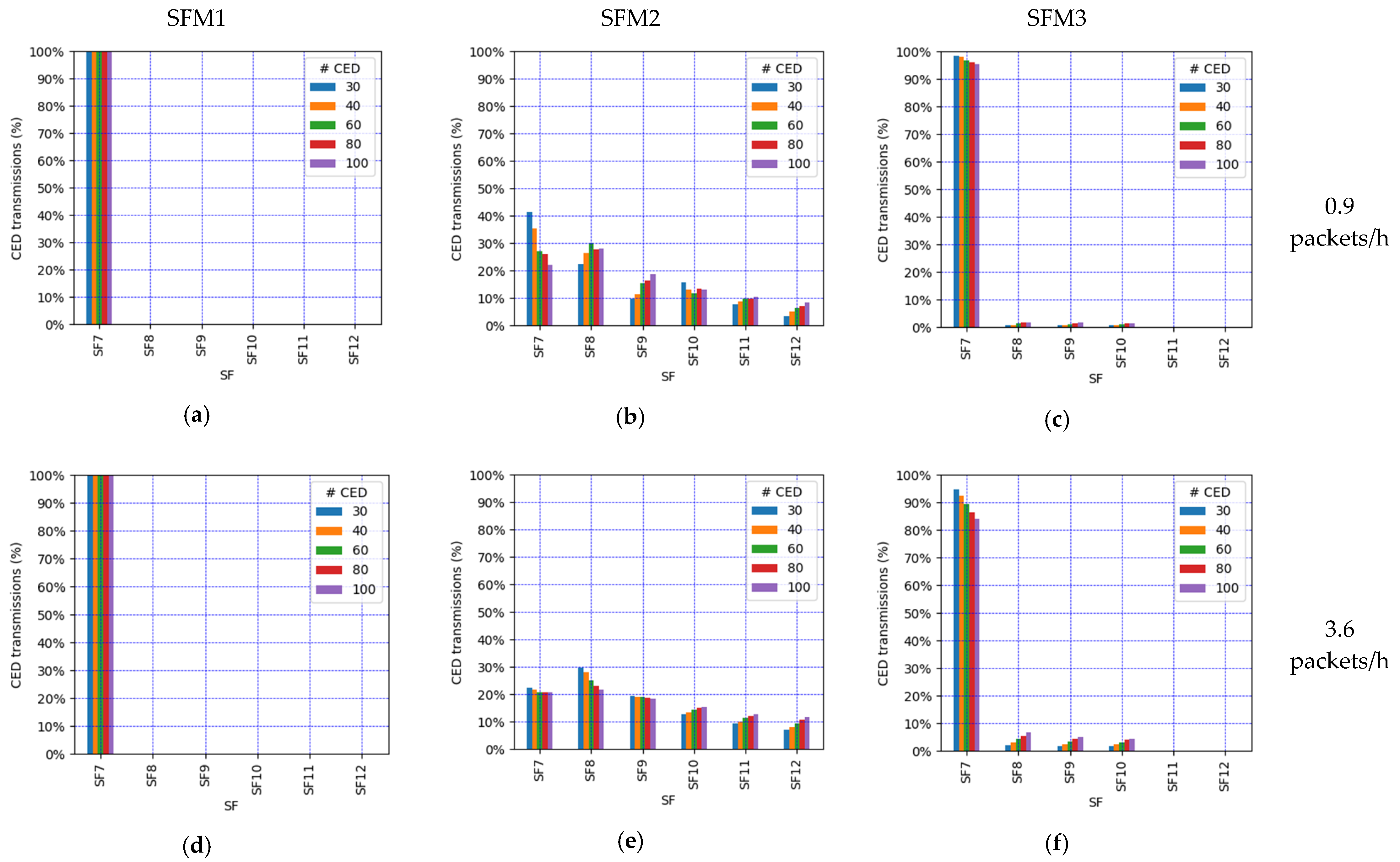

| Data Rate (DR) | Modulation | Spreading Factor | Bandwidth (kHz) | Bit Rate (bit/s) |
|---|---|---|---|---|
| 0 | LoRa | SF12 | 125 | 250 |
| 1 | LoRa | SF11 | 125 | 440 |
| 2 | LoRa | SF10 | 125 | 980 |
| 3 | LoRa | SF9 | 125 | 1760 |
| 4 | LoRa | SF8 | 125 | 3125 |
| 5 | LoRa | SF7 | 125 | 5470 |
| 6 | LoRa | SF7 | 250 | 11,000 |
| 7 | GFSK | 50,000 | ||
Publisher’s Note: MDPI stays neutral with regard to jurisdictional claims in published maps and institutional affiliations. |
© 2021 by the authors. Licensee MDPI, Basel, Switzerland. This article is an open access article distributed under the terms and conditions of the Creative Commons Attribution (CC BY) license (https://creativecommons.org/licenses/by/4.0/).
Share and Cite
Casals, L.; Gomez, C.; Vidal, R. The SF12 Well in LoRaWAN: Problem and End-Device-Based Solutions. Sensors 2021, 21, 6478. https://doi.org/10.3390/s21196478
Casals L, Gomez C, Vidal R. The SF12 Well in LoRaWAN: Problem and End-Device-Based Solutions. Sensors. 2021; 21(19):6478. https://doi.org/10.3390/s21196478
Chicago/Turabian StyleCasals, Lluís, Carles Gomez, and Rafael Vidal. 2021. "The SF12 Well in LoRaWAN: Problem and End-Device-Based Solutions" Sensors 21, no. 19: 6478. https://doi.org/10.3390/s21196478
APA StyleCasals, L., Gomez, C., & Vidal, R. (2021). The SF12 Well in LoRaWAN: Problem and End-Device-Based Solutions. Sensors, 21(19), 6478. https://doi.org/10.3390/s21196478







